Why Block the Chimney When Installing an Electric Fireplace? – Fireplace Craftsman
Why Block the Chimney When Installing an Electric Fireplace?
Electric fireplaces, known for their efficiency, convenience, and eco-friendly features, are becoming the preferred choice for home heating in more and more households. Increasingly, families are replacing their traditional wood-burning fireplaces with more energy-efficient electric fireplaces. However, an important but often overlooked step in installing an electric fireplace is blocking the chimney. This article will explore why it is necessary to block the chimney and introduce some effective methods for doing so.
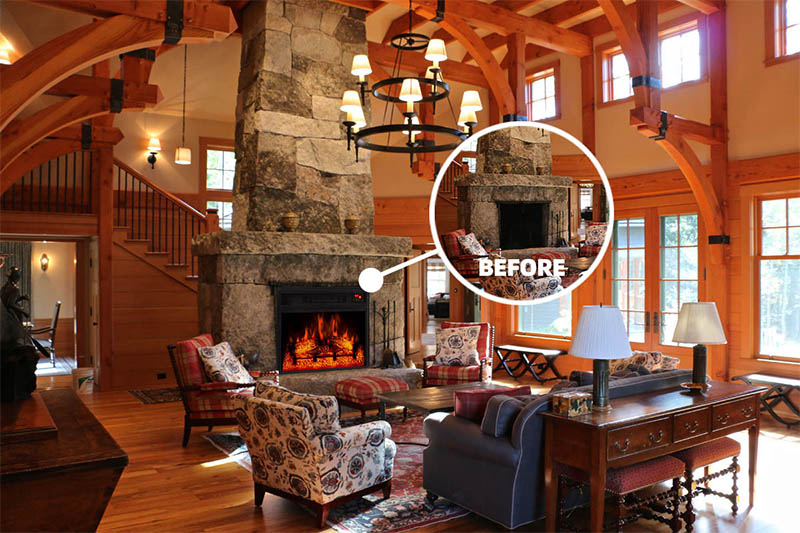
Why Block the Chimney?
1. Prevent Heat Loss
Electric Fireplace Design: Electric fireplaces generate heat through electricity, unlike traditional fireplaces that need to expel smoke. An open chimney can cause heat to escape, reducing the fireplace’s heating efficiency.
Energy Saving: Blocking the chimney prevents heat loss, keeps the room warm, and saves on energy costs.
2. Stop Cold Air Drafts
Maintain Room Temperature: An unblocked chimney allows cold air to enter the room, especially during colder seasons, lowering indoor temperatures and affecting comfort.
Reduce Burden on the Fireplace: Blocking the chimney reduces the workload of the electric fireplace, as it doesn’t need to produce extra heat to counteract the incoming cold air.
3. Prevent Moisture and Debris Entry
Moisture Issues: An open chimney lets moisture into the room, which can cause walls and furniture to become damp, potentially leading to mold and corrosion problems.
Keep Clean: Blocking the chimney prevents dust, debris, and small animals from entering, keeping the indoor environment clean.
4. Enhance Safety
Prevent Accidents: An open chimney may pose risks from falling debris or small animals entering, potentially threatening home safety.
Protect Equipment: Moisture and cold air can affect the electronic components of the electric fireplace, leading to malfunctions or damage. Blocking the chimney can extend the fireplace’s lifespan.
5. Improve Aesthetics
Tidy Appearance: A blocked chimney area looks neater and more attractive, enhancing the overall home aesthetic.
Decorative Options: The blocked chimney opening can be covered with decorative materials, adding to the consistency of interior design.
Is Blocking the Chimney Dangerous?
Blocking the chimney after switching to an electric fireplace is safe because electric fireplaces operate in a sealed manner, do not require combustion materials, and do not produce an open flame or require a chimney for ventilation. Therefore, blocking the chimney poses no danger to the electric fireplace or its users and is a recommended practice. To understand why the chimney is unnecessary for an electric fireplace, let’s compare the working principles of traditional and electric fireplaces.
Comparison: Traditional Fireplaces vs. Electric Fireplaces
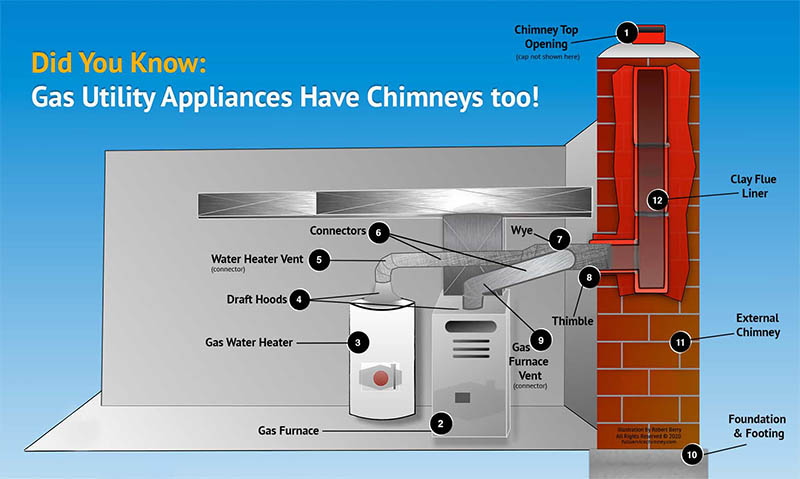
| Feature | Traditional Fireplaces | Electric Fireplaces |
|---|---|---|
| Heat Generation | Burns wood, coal, or other fuels. | Uses electric heating elements (wires or tubes). |
| Byproducts | Produces smoke, ash, and harmful gases (e.g., carbon monoxide). | No combustion; produces no smoke, ash, or harmful gases. |
| Ventilation | Smoke/gases must be expelled through the chimney for safety. | No emissions; chimney not required. |
| Heat Distribution | Radiant heat from fire. | Transfers heat via convection, radiation, or fans. |
Switching to an electric fireplace and blocking the chimney not only is safe but also helps enhance heating efficiency, prevent cold drafts, and keep the indoor environment dry and clean. Since electric fireplaces do not involve combustion or produce emissions, blocking the chimney poses no health or safety risks.
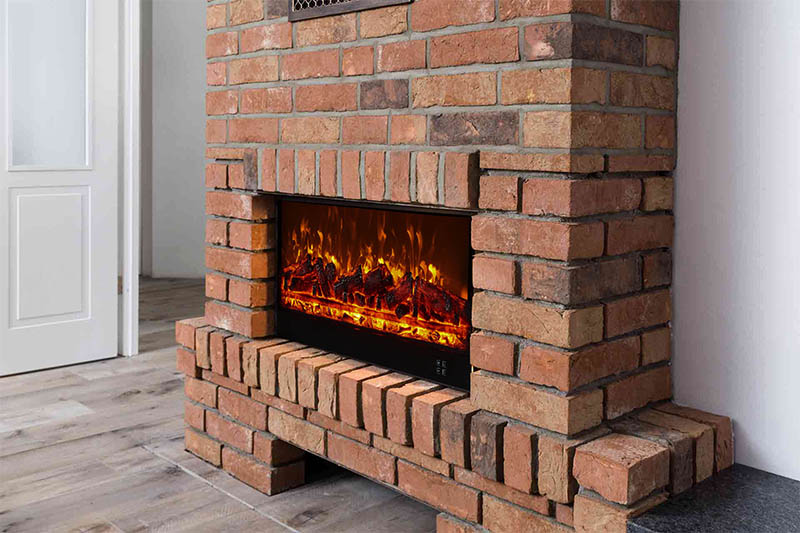
Benefits of Blocking the Chimney
- Prevent Heat Loss: Blocking the chimney prevents heat from escaping, improving the heating efficiency of the electric fireplace.
- Energy Saving: Reduces energy waste and lowers carbon emissions. Retains more indoor heat, reducing energy consumption.
- Stop Cold Air Drafts: Prevents cold air from entering, keeping the indoor environment warm and comfortable.
- Prevent Moisture and Debris Entry: Keeps out moisture, dust, and small animals, preventing dampness and mold issues.
- Improve Indoor Air Quality: Prevents outdoor pollutants from entering the room.
Overall, blocking the chimney not only improves the efficiency of the electric fireplace and reduces energy consumption but also enhances the indoor environment and comfort.
Preparations for Blocking the Chimney
Proper preparations are essential before blocking the chimney to ensure the process goes smoothly and safely. Here are some common preparation steps:
- Check the Chimney’s Condition: Inspect for cracks or damage; repair if necessary.
- Clean the Chimney: Remove dust, soot, and debris before sealing.
- Choose Appropriate Sealing Materials: Use fire-resistant materials that can withstand high temperatures (e.g., chimney balloons, plugs, caps).
- Prepare Necessary Tools: Have ladders, hand tools, and protective gear ready.
- Safety Measures: Follow safety protocols for working at heights and use protective equipment.
- Ventilation: Ensure good indoor ventilation during the process.
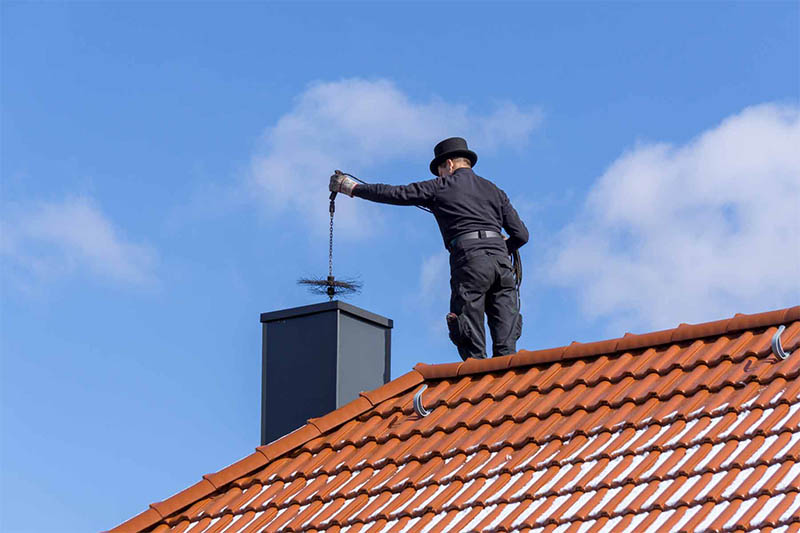
Effective Methods for Blocking the Chimney
Several methods can be used to block a chimney. Depending on your needs and budget, you can choose different solutions:
1. Chimney Balloon
Advantages: Easy to install, cost-effective, reusable.
Usage: Insert into the chimney opening and inflate until it fits tightly. Check regularly.
2. Chimney Plug
Advantages: Easy installation, good sealing effect, long-term use.
Usage: Made of insulating materials; insert into the opening for a tight fit.
3. Chimney Cap
Advantages: Multiple protections, durable, prevents rain/animals.
Usage: Installed at the top of the chimney (requires professional installation).
4. Chimney Seal Plate
Advantages: Excellent sealing, permanent, aesthetically pleasing.
Usage: Metal or heat-resistant plate fixed at the opening.
5. Insulating Material Filling
Advantages: Cost-effective, easy to obtain.
Usage: Fill with fiberglass or foam. Suitable for temporary sealing.
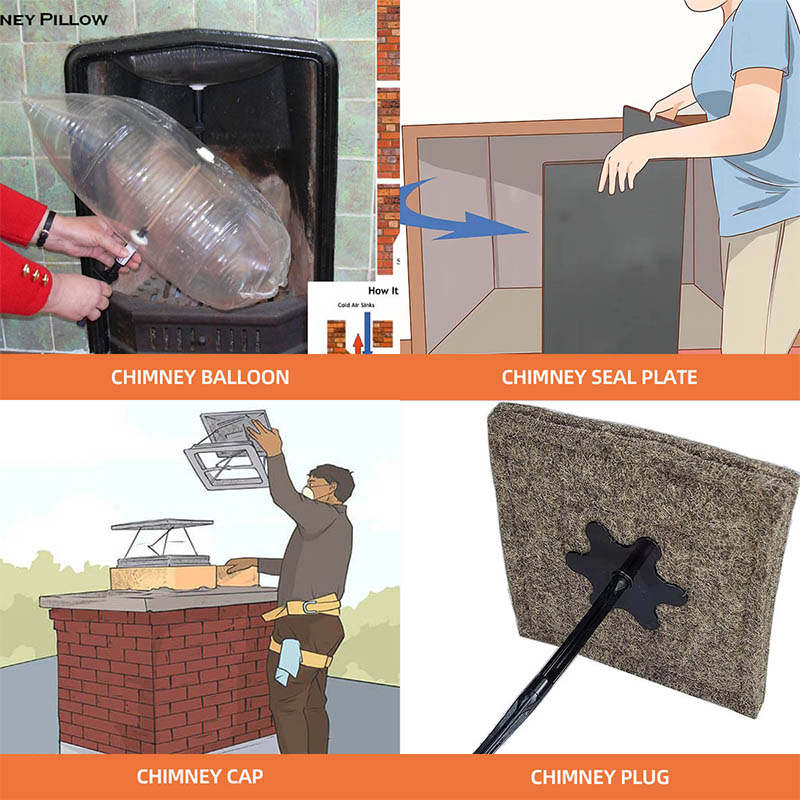
How to Check the Chimney Blockage
After switching to an electric fireplace and blocking the chimney, it’s important to ensure the blockage is complete and safe.
Checking the Chimney Blockage
- Visual Inspection: Ensure sealing materials completely cover the opening with no gaps.
- Seal Test: Use a smoke test or soapy water to check for air leaks.
Ensuring Safe Operation of the Electric Fireplace
- Operation Test: Ensure the fireplace runs without abnormal noises or smells.
- Temperature Check: Check for hot spots or overheating around the unit.
- Air Circulation Test: Ensure indoor air is not stagnant and monitor CO2/CO levels.
Conclusion
Blocking the chimney is a crucial step when installing an electric fireplace to enhance heating efficiency, prevent cold drafts, control moisture, and improve aesthetics. Whether you choose a chimney balloon or a chimney cap, it’s important to select the best option based on actual needs. Ensuring the chimney is properly blocked not only makes the electric fireplace work more efficiently but also adds safety and comfort to the home environment.
Post time: Jun-11-2024












